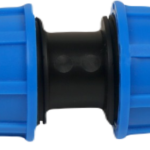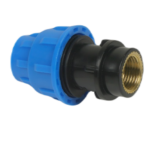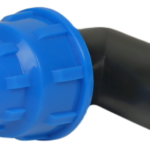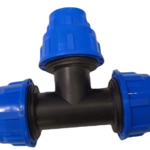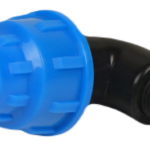The Ultimate Guide to MDPE Fittings, Materials, and Applications in Gas and Water Systems
What is MDPE Material?
Properties of MDPE material
MDPE (Medium Density Polyethylene) is a versatile plastic material known for its flexibility, low density, and high impact resistance. It is made from polymerized ethylene, offering a balance between strength and flexibility, which makes it ideal for underground piping systems, particularly for gas and water transportation. MDPE material is also resistant to most chemicals, making it a reliable option in harsh environments.
Applications of MDPE in piping systems
MDPE material is widely used in the production of pipes for water supply, gas distribution, and sewage systems. Its ability to withstand high pressures and resistance to corrosion makes it the material of choice for outdoor and underground applications.
What is HDPE and MDPE Difference?
HDPE vs MDPE: Strength and Flexibility
HDPE (High-Density Polyethylene) is a more rigid material compared to MDPE. It is denser, stronger, and has a higher tensile strength, which makes it suitable for applications that require resistance to high pressures. MDPE, on the other hand, is more flexible and has a lower density, making it more suitable for systems where flexibility and ease of handling are essential.
Applications of HDPE and MDPE
HDPE is typically used in applications that demand high strength, such as large-scale industrial piping or pressure-sensitive systems, whereas MDPE is often used in gas and water distribution systems where moderate strength and flexibility are needed.
What is MDPE Gas Pipe?
Characteristics of MDPE gas pipes
MDPE gas pipes are specially designed pipes used in natural gas distribution systems. These pipes are manufactured from medium-density polyethylene and are used to safely transport natural gas to residential, commercial, and industrial properties. MDPE gas pipes are lightweight, easy to install, and provide long-lasting protection against leaks and other hazards.
Why MDPE is used for gas piping
MDPE gas pipes are highly resistant to corrosion and chemical degradation, ensuring safe and reliable gas transport. Additionally, MDPE pipes offer high flexibility, allowing them to withstand ground movements and minimize the risk of ruptures or breaks.
Which Pipe is Best for Gas Fitting?
Why MDPE is preferred for gas fittings
MDPE pipes are often considered the best choice for gas fittings due to their excellent resistance to environmental factors, corrosion, and cracking. These pipes are lightweight, flexible, and easy to work with, which makes installation faster and more cost-effective.
Other pipe options for gas fitting
While MDPE is a popular choice for gas fittings, HDPE and steel are also used for gas distribution, especially in areas where higher strength and load-bearing capacity are required. However, MDPE pipes remain the go-to option for most residential and commercial gas distribution systems due to their safety, reliability, and ease of use.
Is MDPE Plastic Safe to Use?
Safety considerations for MDPE plastic
MDPE plastic is generally considered safe for use in piping systems, including water and gas distribution. The material is non-toxic, resistant to corrosion, and does not leach harmful substances into the water or gas it transports. MDPE plastic pipes meet various regulatory standards, making them a safe choice for both residential and industrial applications.
Environmental impact of MDPE plastic
While MDPE is safe for use in piping systems, like all plastics, it can have an environmental impact if not properly disposed of. Recycling programs for MDPE materials are available, and many manufacturers are working to make MDPE plastic more eco-friendly.
What are MDPE Advantages and Disadvantages?
Advantages of MDPE
- Corrosion Resistance: MDPE pipes are highly resistant to corrosion, making them ideal for use in water and gas distribution systems.
- Flexibility: MDPE pipes are flexible, which allows them to adapt to shifting ground conditions without cracking.
- Cost-effective: MDPE is lightweight, reducing transportation and installation costs.
- Low Maintenance: Due to their durability, MDPE pipes require minimal maintenance.
Disadvantages of MDPE
- Strength Limitations: While MDPE pipes are strong enough for most residential and commercial applications, they may not be suitable for high-pressure systems.
- Temperature Sensitivity: MDPE has limited resistance to high temperatures, which can affect its performance in systems involving hot water or extreme heat.
Which is Better, HDPE or MDPE?
HDPE vs MDPE for pipe systems
Both HDPE and MDPE are excellent materials for piping systems, but the best choice depends on the specific application. HDPE is better for high-pressure systems, industrial uses, or applications requiring high tensile strength. MDPE, on the other hand, is more suitable for gas distribution and water supply systems where flexibility and ease of installation are more important than high strength.
Cost and maintenance differences
In terms of cost, MDPE is typically more affordable than HDPE, which makes it a more budget-friendly option for residential and light commercial applications. However, for applications requiring higher strength or resistance to extreme environmental factors, HDPE is the better choice
Is MDPE Heat Resistant?
Heat resistance of MDPE
MDPE is not highly resistant to extreme heat. It typically begins to soften at temperatures above 60°C (140°F). This means that MDPE is not ideal for applications involving high temperatures or hot water. However, for most underground and cold-water systems, MDPE remains a reliable option.
Alternative materials for heat-sensitive applications
polyethylene (PEX) are better choices due to their higher temperature tolerance.
Can MDPE Pipe Be Used for Hot Water?
Limitations of MDPE for hot water
MDPE pipes are generally not suitable for hot water systems. They are designed for cold water and gas systems and can begin to deform or degrade when exposed to temperatures higher than 60°C (140°F). Therefore, they should not be used for carrying hot water or in environments where the temperature regularly exceeds this limit.
Alternative pipes for hot water systems
For hot water systems, PEX, copper, or CPVC pipes are commonly used, as they can withstand higher temperatures without compromising the integrity of the system.
What Temp Does MDPE Melt?
Melting point of MDPE
MDPE has a melting point of approximately 130-135°C (266-275°F). This makes it unsuitable for high-temperature applications, as it will start to soften and lose its structural integrity at temperatures significantly lower than its melting point.
Implications for use in different environments
For hot water systems, PEX, copper, or CPVC pipes are commonly used, as they can withstand higher temperatures without compromising the integrity of the system.
Manufacturing Process of CPVC Piping Systems
Conclusion
MDPE (Medium Density Polyethylene) is a versatile material widely used in plumbing and gas distribution systems. It offers numerous advantages such as flexibility, cost-effectiveness, and resistance to corrosion. However, MDPE does have some limitations, including its sensitivity to high temperatures and its relatively lower strength compared to other materials like HDPE. Understanding these pros and cons can help you make informed decisions about when and where to use MDPE fittings and pipes in your next construction or plumbing project.
Frequently asked questions
Here are answers to some frequently asked questions about Fitwell's plumbing services.
MDPE is generally not recommended for high-pressure systems, as it does not offer the same strength as HDPE. For high-pressure applications, HDPE is a better choice.
Yes, MDPE is commonly used in gas distribution systems due to its flexibility, corrosion resistance, and ease of installation.
MDPE is more flexible and suitable for moderate-pressure systems, while HDPE offers higher strength and is more suited for high-pressure and industrial applications.
No, MDPE is not ideal for hot water systems, as it begins to soften at temperatures above 60°C (140°F). Alternative materials like PEX or copper are better suited for hot water systems.
Stay on the forefront of industry trends by checking out our latest content
Stay ahead with our latest content, designed to keep you informed on the newest industry trends and insights. Discover valuable updates that help you lead in your field.

Trusted uPVC Pipes Manufacturers for India’s Top Contractors
Introduction: The Surge in Demand for uPVC Pipes Among Top Contractors in India The construction and infrastructure sectors in India have witnessed a significant transition toward sustainable and long-lasting materials.
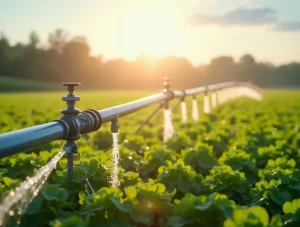
Top Innovations in Agricultural Pipe Fittings for Water Savings [2025]
Introduction to Agricultural Pipe Fittings and Water Sustainability Agricultural pipe fittings play a pivotal role in building efficient irrigation systems, crucial for modern farming practices. By exploring the versatility of

Expeart Tips from MDPE Pipe Fittings Manufacturers to Avoid Failures
Expeart Tips from MDPE Pipe Fittings Manufacturers to Avoid Failures Understanding MDPE Pipe Fittings: An Overview MDPE (Medium Density Polyethylene) fittings, used extensively in gas and water systems, offer strong,
Request a Free Consultation
Get personalized plumbing solutions with a free consultation from Fitwell.

